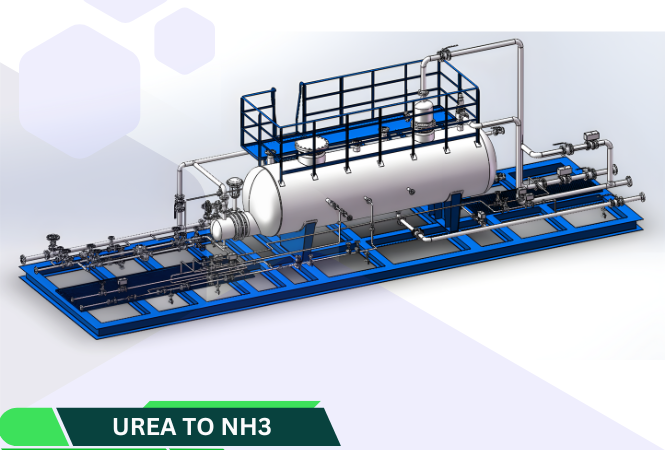Chemistry and Process
HIPS technology is based on a continuous mass peroxide-initiated polymerization of styrene in a rubber-styrene solution.
Rubber soltion preparation - rubber, after being ground in a mill, is dissolved in styrene in a proper section and then added with chemicals and peroxide in a mixing section.
Polymerization - this mixture is fed to the polymerization section, generally composed by a sequence of two/three plug-flow reactors; the reaction thermal profile is controlled by thermal oil circulating inside internal coils. The whole reaction section arrangement is selected case-by-case, in order to meet specific requirements.
At the end of the reaction train, the polymer solution is sent to a devolatilization section, operated in two stages in series under vacuum conditions.
The monomer and low-boiling compounds are removed from the polymer, which is finally sent to the pelletizing unit. The heat is provided by a thermal oil system. The vapour mixture, recovered by the devolatilization section, is condensed and then continuously recycled to the mixing section. Non-condensed vapours/inert gases from the vacuum system and liquid organic purge from the condensation section are recovered as fuel in a furnace, where thermal oil for the process is heated
.png)

MAIN DESIGN FEATURES
The key features of POLYTECH HIPS technology are:
special and unique process and mechanical design of key equipment such as the reactor and devolatilizer;
really simple process scheme and easy process control;
flexible technology allowing tailor-made solutions for specific needs, in terms of plant capacity and products range;
minimum amounts and number of foreign materials introduced in the process;
very low residual monomer and oligomer content;
very high rubber phase efficiency (reduced rubber consumption), minimum rubber cross-linking and polymer degradation;
POLYTECH HIPS technology minimizes the effects of raw materials and chemical impurities on the process and product structural parameters;
fine-tuned macromolecular structure (rubber particles size and resins molecular weights distribution)
.png)
SPECIAL DESIGNED PLUG FLOW REACTOR
There are many advantages of using a plug flow or continuous flow reactor over a traditional batch reactor. Selecting the correct type of flow reactor for the chemistry and application is key. Whatever the reactor type there are some fundamental advantages of continuous flow reactors.
Efficient Residence time control – this is a direct function of reactor volume and flow rate.
Efficient Temperature Control – high surface area to volume ration promotes efficient heat transfer
Efficient mixing – if under laminar flow conditions mixing is reproducible.
Limited batch-to-batch variation – the whole reaction sees the same reaction conditions.
No back mixing
Direct scalability – the same reactor can be used to produce a range of quantities
Energy efficiency – the continuous nature avoids stopping and starting as in batch reactions.
DEVOLATILLIZATION TECHNOLOGY
Key Features of Our Polymer Devolatilization Equipment:
Very low residue content (residual VOC) levels
Prevention of damage to product due to avoidance of elevated process temperatures and hot spots through efficient heat transfer equipment
Ideal for sensitive products due to low shear forces in the process
Lower power consumption due to the absence of heavy rotating equipment
Reduced mechanical maintenance
Moderate capital cost due to unique process concept


MODELS AND TECHNICAL SPECIFICATIONS
Working pressure | Vacuum to Over 100 bars |
Working temperature | -30 to 350 ℃ |
Wetted material | SUS304, SUS316L, ALLOY |
APPLICATION FIELDS
DOWNLOADS
DOWNLOADS
ENGLISH
ENGLISH

.png)
PEWAX REFINERY PLANT
Currently, there are three main methods for the production of polyethylene wax.
First, by polymerization.
Second, by degradation of high polymers.
Third, by separation from byproduct in the synthesis process of polyethylene,

UREA TO AMMONIA
In a water-based solution, urea undergoes hydrolysis to produce ammonia (NH3). Our URA process converts safe and nontoxic urea to an ammonia product gas as needed to meet plant process demands for denox operation in the field of air quality control.

